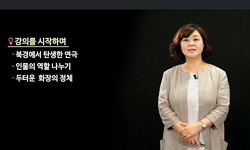본고는 서울과 부산을 중심으로 본격적으로 외국인 거류지가 등장하는 1880년 대부터 한일강제병합이 체결되기까지 약 30여년간 한반도에 유입된 외국 공연예 술을 고찰하였다. 외국 공연단...
http://chineseinput.net/에서 pinyin(병음)방식으로 중국어를 변환할 수 있습니다.
변환된 중국어를 복사하여 사용하시면 됩니다.
- 中文 을 입력하시려면 zhongwen을 입력하시고 space를누르시면됩니다.
- 北京 을 입력하시려면 beijing을 입력하시고 space를 누르시면 됩니다.
부가정보
국문 초록 (Abstract)
본고는 서울과 부산을 중심으로 본격적으로 외국인 거류지가 등장하는 1880년 대부터 한일강제병합이 체결되기까지 약 30여년간 한반도에 유입된 외국 공연예 술을 고찰하였다. 외국 공연단이 연행하는 공연물들 중에는 서구의 연극에 자극을 받아 새로이 탄생한 근대연극도 들어있지만 자국의 전통적인 연극이 많이 섞여 들 어오기도 했다. 이들 공연물의 범위는 조선의 전통적인 연희와 궤를 달리하는 것 들을 포함하는데, 이중에는 일본이나 중국, 서양을 통해 들어온 곡예나 묘기도 포 함된다. 이들의 공연을 ‘근대적’이라고 말할 수 없는 부분이 있지만, 당시 조선인에 게는 연극-신극․신파극 등-만큼이나 색다르고 진기한 경험이었다. 주로 일본을 통해 곡예나 묘기를 전문으로 하는 공연단이 조선에 건너오면서 지금까지와는 다른 연희세계를 알게 된 것이다. 이러한 공연물들은 매우 제한적인 자료와 정서적 무관심 때문에 우리 공연사에서 그다지 다루지 않았던 영역들이기도 하다. 그런데 이 공연물들의 공연내용을 살펴보면 한국 전통공연예술과 맥을 같이하는 부분들이 적지 않다. 예를들어 일본 거류지에서 연행된 곡예류들은 얼핏‘새로운 공연물’ 이지만 내용면에서는 아주 동떨어진 것만은 아니라는 점이다. 외국인 거류지를 중심으로 활동하던 공연단들은 처음엔 부산, 인천, 원산 등 개 항장 항구도시에 마련된 자국 거류지를 중심으로 활동했다. 연희단의 주요 관객은 자국인이었겠으나, 시간이 갈수록 현지 관객의 흥미를 끌며 공연 범위를 넓혀갔다. 본고에서는 근대 공연예술의 흥행 과정 첫 머리에 위치한 개항 직후를 중심으로 서울과 부산의 외국인 거류지에서 활동한 중국(청국), 일본 등 외국 공연단의 흥행 활동을 통해 근대 공연문화의 변화양상을 고찰하였다.
다국어 초록 (Multilingual Abstract)
In the early 20th century, institutions of modern theatrical performances were established, enabling traditional performances to be staged in indoor theaters. During this period, performing arts of Joseon underwent significant qualitative improvement....
In the early 20th century, institutions of modern theatrical performances were established, enabling traditional performances to be staged in indoor theaters. During this period, performing arts of Joseon underwent significant qualitative improvement. The category of so-called modern performing arts included circus and magic shows from Japan, China, and the West, each presenting a different approach to performance within Joseon’s traditional society. Notably, Japanese circus troupes disrupted the traditional performing arts scene of Joseon with their unique theatrical techniques. The influx of Chinese and Japanese settlers in Seoul, following the opening of Joseon Dynasty’s ports to foreign vessels, led to an increase in performers and performing groups among these communities. It also drew a local audience in Joseon. Japanese performers known for their style of ‘misemono’ (みせ-もの) quickly gained popularity among audiences in Joseon. Circus troupes like ‘Seihama Manjisha’ (西濱萬治社中) and ‘Okuda Shachu Dai’ (奧田社中 大) became prominent during this era, advertising their performances in newspapers. The emergence of modern theatrical institutions and the arrival of diverse external performing groups posed explicit challenges. to Joseon;s performing arts scene in the early 20th century. Traditional performing arts groups in Joseon responded by adapting different performing styles or creating new theatrical offerings in their quest to sustain themselves economically.
목차 (Table of Contents)
- 【국문초록】
- Ⅰ. 서론
- Ⅱ. 서울의 청ㆍ일 거류지와 외래 공연물
- Ⅲ. 부산의 일본인 거류지와 일본 예능
- Ⅳ. 결론
- 【국문초록】
- Ⅰ. 서론
- Ⅱ. 서울의 청ㆍ일 거류지와 외래 공연물
- Ⅲ. 부산의 일본인 거류지와 일본 예능
- Ⅳ. 결론
- 【참고문헌】
동일학술지(권/호) 다른 논문
-
뮤지컬 <여기, 피화당>의 고전소설 <박씨전> 변용 양상과 고전문학콘텐츠화 방안
- 동아시아고대학회
- 김지혜
- 2024
- KCI등재
-
근세의 고대사 편찬과 쇼군의 ‘무위(武威)’ - 대외관계적 관점에서 -
- 동아시아고대학회
- 장혜진
- 2024
- KCI등재
-
월터 힐리어 The Chinese language and how to do learn it을 통해 본 문학 번역을 통한 중국어 학습
- 동아시아고대학회
- 구현아
- 2024
- KCI등재
-
질병과 죽음을 경유한 원혼들의 서사와 그 탐색 - 안지추(顏之推)의 『원혼지(冤魂志)』를 중심으로 -
- 동아시아고대학회
- 유강하
- 2024
- KCI등재





 KCI
KCI eArticle
eArticle





